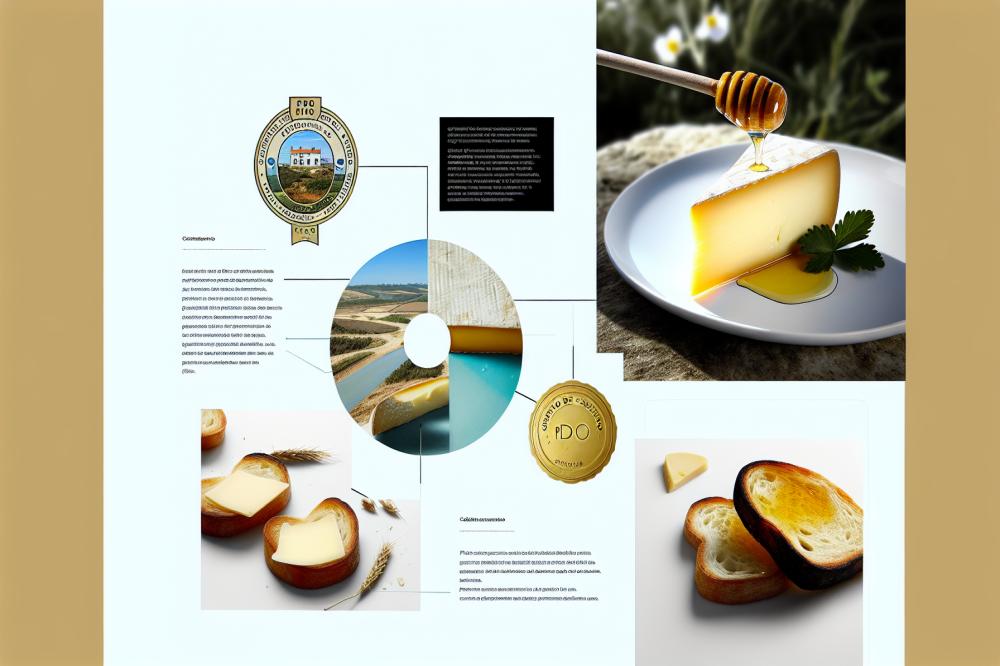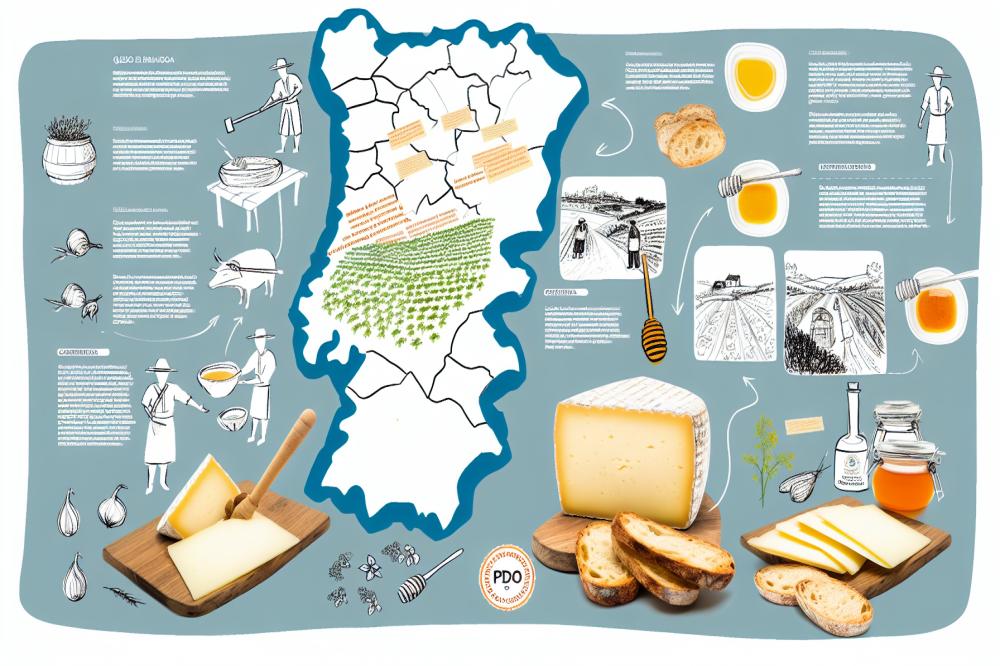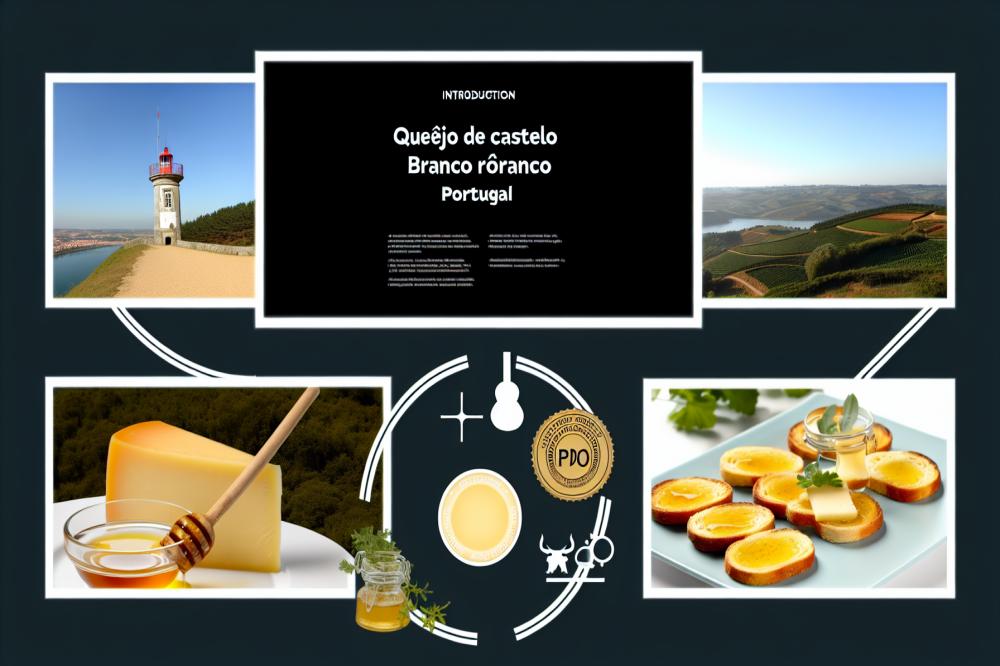Introduction
Exploring the world of Portuguese cheeses reveals a vibrant tapestry of flavors and traditions. Portugal boasts an impressive array of cheeses, each reflecting its local history and culture. Among these cheeses, one stands out: Queijo de Castelo Branco.
This distinctive PDO cheese originates from the Castelo Branco region, nestled in the heart of Portugal. Its importance extends beyond mere taste; it showcases local craftsmanship. Artisan techniques and rich, local ingredients come together, crafting a cheese that embodies the character of its surroundings.
The blend of sheep’s milk used in its production contributes to its creamy texture and exquisite flavor. Cheese lovers will appreciate the notes that vary from mild to sharp, depending on aging. Each bite tells a story of tradition, skill, and the rich agricultural heritage of the area.
This cheese carries significant cultural weight for the community it represents. Local farmers have produced it for generations, ensuring a way of life continues to thrive. It not only serves as a culinary delight but also as a testament to the region’s heritage and identity.
Queijo de Castelo Branco

Description and history of Queijo de Castelo Branco
Queijo de Castelo Branco is a traditional cheese from Portugal, specifically made in the region around Castelo Branco. It has been enjoyed for centuries, with roots that can be traced back to ancient times. Local shepherds originally crafted this cheese using sheep’s milk. Their methods evolved over generations, blending tradition with necessity. As a result, its production reflects both cultural heritage and artisanal skill.
Details on production methods and traditional practices
The cheese is crafted from raw sheep’s milk, often from the Merino breed, known for its rich milk. After milking, the milk is heated and rennet is added to curdle it. Once the curds form, they are
PDO cheese

Explanation of PDO (Protected Designation of Origin)
PDO stands for Protected Designation of Origin. This label is crucial for preserving traditional foods. It guarantees that a product originates from a specific region. Only products that meet rigorous standards can carry this designation. Cheeses classified under PDO must adhere to strict local practices and recipes. As a result, consumers receive not just a product, but a piece of its origin.
Criteria for PDO Classification
To achieve PDO status, there are several key criteria. First, the cheese must be produced in a designated area. Second, the entire production process, from milk collection to packaging, must occur within that region. Additionally, specific production techniques must be used. Each method helps maintain the product’s authenticity and quality. Regular inspections ensure compliance with these standards. All these factors contribute to the product’s reputation.
Importance of PDO for Quality and Heritage
The PDO classification serves an essential purpose. It protects traditional food products and endorses quality. This designation fosters a connection between consumers and their food’s origins. There’s a sense of trust associated with PDO cheeses. People know they are enjoying something crafted with care. Heritage plays a substantial role in this context as well. The unique methods passed down through generations are preserved. Protecting these practices enriches local cultures.
Connection of Queijo de Castelo Branco to Local Producers
Local producers of this famous cheese maintain a strong bond with their community. They follow centuries-old techniques handed down over time. This cheese reflects the landscape and environment of its origin. Farmers use local sheep’s milk to create distinct flavors, which are deeply rooted in the area. Supporting these producers enhances the local economy. Their commitment to quality benefits not only the cheese enthusiasts but also the community as a whole. Local pride is evident in every bite.
Recipe: Queijo de Castelo Branco and Honey Toasts

This delightful dish is simple yet bursting with flavor. Combining rich cheese with sweet honey makes for a perfect appetizer or snack. The following ingredients will help you create a memorable experience for your taste buds.
Ingredients
- 200g Queijo de Castelo Branco
- 4 slices of rustic bread
- 2 tablespoons honey
- Fresh herbs for garnish (e.g., thyme or rosemary)
Recipe Instructions
The first step is to toast the slices of rustic bread. Aim for a golden-brown color, which gives a crunchy base. Meanwhile, slice the cheese into thin pieces. The texture will complement the toast beautifully.
Once the bread is ready, arrange the cheese slices neatly on the toasted surface. A generous layer will create a satisfying bite. After this, drizzle honey on top of the cheese. This sweet touch elevates the overall flavor profile.
For the final flourish, add fresh herbs as a garnish. Thyme or rosemary works well and adds an aromatic hint. Enjoy this dish immediately for the best experience. Sharing it with friends can make the moment even sweeter.
Nutritional Information and Health Benefits

Queijo de Castelo Branco offers a variety of nutrients that contribute to a balanced diet. This cheese is primarily made from sheep’s milk, which gives it a rich nutritional profile. A typical serving of this cheese contains significant amounts of protein, calcium, and other essential vitamins.
Nutritional Profile
Each 100-gram serving packs approximately 22 grams of protein. Consuming protein is important for maintaining muscle mass and overall health. Calcium content is another highlight. With around 800 milligrams per serving, this cheese is a solid choice for those seeking to boost their calcium intake.
Health Benefits
Addressing calcium intake is vital, especially for bone health. Strong bones and teeth can be supported by regular calcium consumption. Additionally, protein assists in healing and growth, making it an essential part of the diet. The fat content in Queijo de Castelo Branco is moderate, which can contribute to energy levels without overwhelming calorie counts.
Possible Allergens and Considerations
For individuals with lactose intolerance, this cheese might pose a challenge. While some might find it easier to digest due to its unique characteristics, caution is still advisable. Allergies to dairy products are common, so consideration is crucial. Always consult with a healthcare provider if unsure about dietary choices.
People following a strict vegan or dairy-free diet should avoid it altogether. As with any food, moderation is key. Understanding personal dietary needs can help one enjoy this delicious cheese while maximizing health benefits.
Final Thoughts
Recap of the Significance
Queijo de Castelo Branco is more than just a cheese; it embodies the heart of Portuguese culinary tradition. This artisanal cheese has earned Protected Designation of Origin (PDO) status due to its distinct characteristics and the specific region where it is made. The meticulous methods used by local cheesemakers highlight the importance of preserving traditional crafts. Flavors emerge from practices passed down through generations, making this cheese a true treasure of Portugal.
Encouragement to Explore
Diving into the world of Portuguese cheese can be a delightful journey. Each variety tells a story, revealing the rich agricultural landscape and diverse cultures of the country. From creamy spreads to robust flavors, there is a cheese for everyone. Whether in a quaint shop in Lisbon or a local market in the countryside, tasting these products is an adventure waiting to unfold.
Invitation to Try the Recipe
If you’re feeling inspired, trying a simple recipe featuring this remarkable cheese could be a wonderful way to appreciate its flavors. Cooking with it opens new avenues for exploration. Experience firsthand how it enhances dishes and gets your taste buds singing. Portugal’s cheese heritage is calling, inviting you to embrace delicious experiences. So, why not take the plunge and bring a piece of Portugal into your kitchen?



